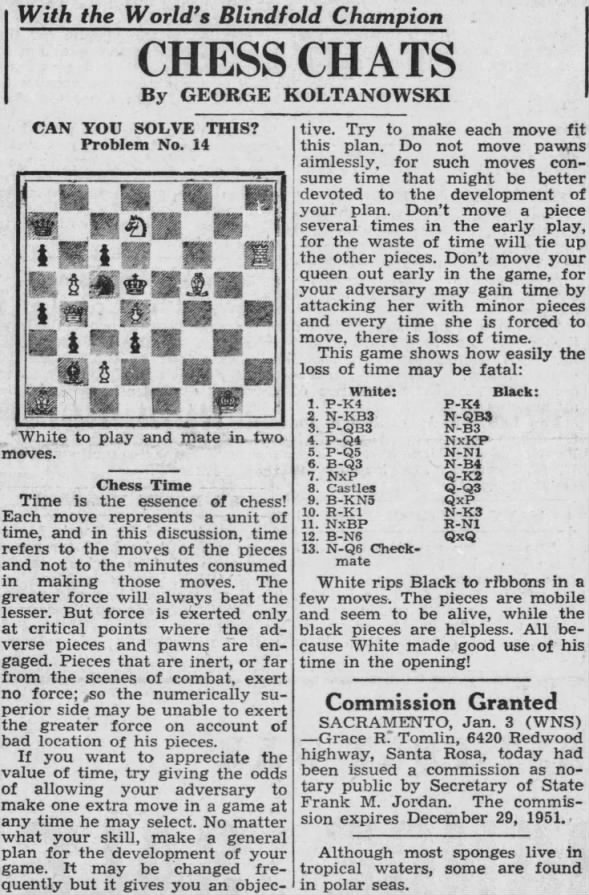 Chess Chats 04 Jan 1948, Sun The Press Democrat (Santa Rosa, California) Newspapers.com
Chess Chats 04 Jan 1948, Sun The Press Democrat (Santa Rosa, California) Newspapers.com
Chess Chats by George Koltanowski Sunday, January 04, 1948 The Press Democrat Santa Rosa, California Problem No. 14....
Posted by Bobby Fischer's True History on Wednesday, February 19, 2020
Problem No. 14. White to play and mate in two moves.
FEN 8/q2N4/p1p4R/1Pnk1B2/pQ1P4/1p1p4/1bP5/B5K1 w - - 0 1
Solution: 1. b6 Nxd7 2. Rd6#
Chess Time
Time is the essence of chess! Each move represents a unit of time, and in this discussion, time refers to the moves of the pieces and not to the minutes consumed in making those moves. The greater force is exerted only at critical points where the adverse pieces and pawns are engaged. Pieces that are inert, or far from the scenes of combat, exert no force; so the numerically superior side may be unable to exert the greater force on account of bad location of his pieces.
If you want to appreciate the value of time, try giving the odds of allowing your adversary to make one extra move in a game at any time he may select. No matter what your skill, make a general plan for the development of your game. It may be changed frequently but it gives you an objective. Try to make each move fit this plan. Do not move pawns aimlessly, for such moves consume time that might be better devoted to the development of your plan. Don't move a piece several times in the early play, for the waste of time will tie up the other pieces. Don't move your queen out early in the game, for your adversary may gain time by attacking her with minor pieces and every time she is forced to move, there is a loss of time.
This game shows how easily the loss of time may be fatal:
Koltanowski Instructional Game
Ponziani Opening: Jaenisch Counterattack
White rips Black to ribbons in a few moves. The pieces are mobile and seem to be alive, while the black pieces are helpless. All because White made good use of his time in the opening!






















